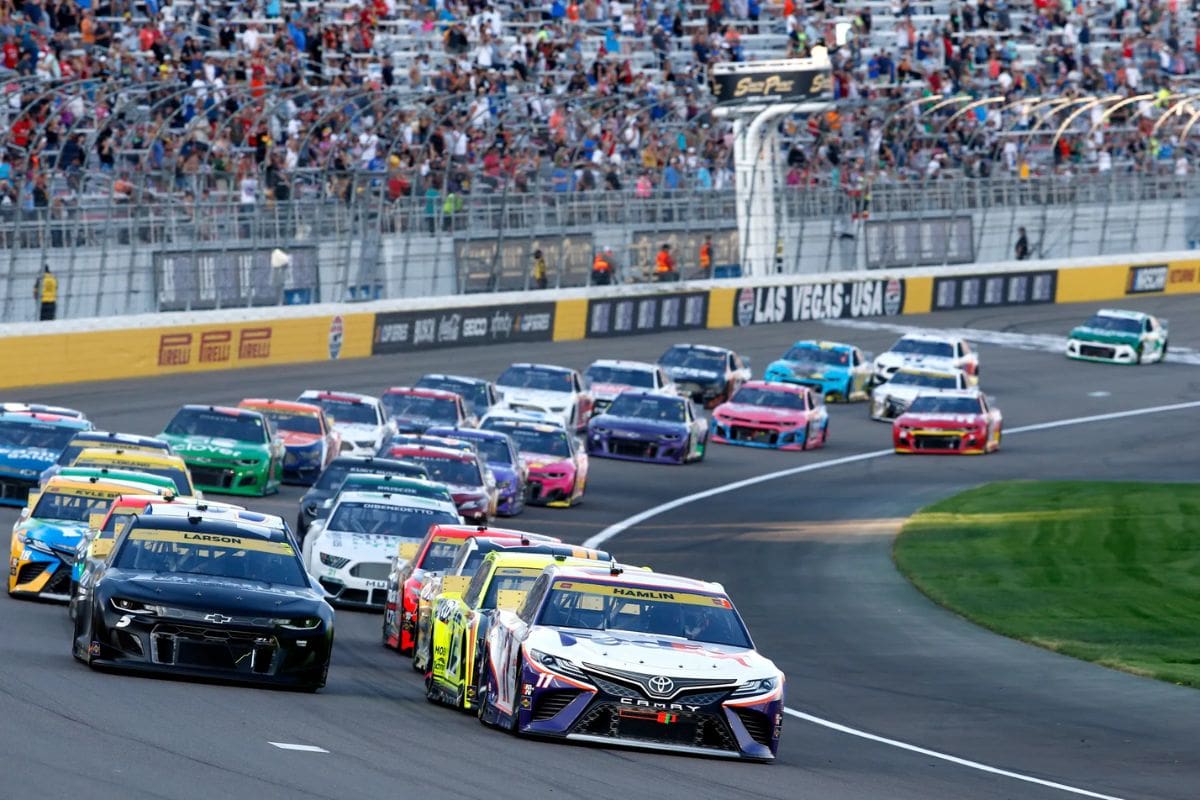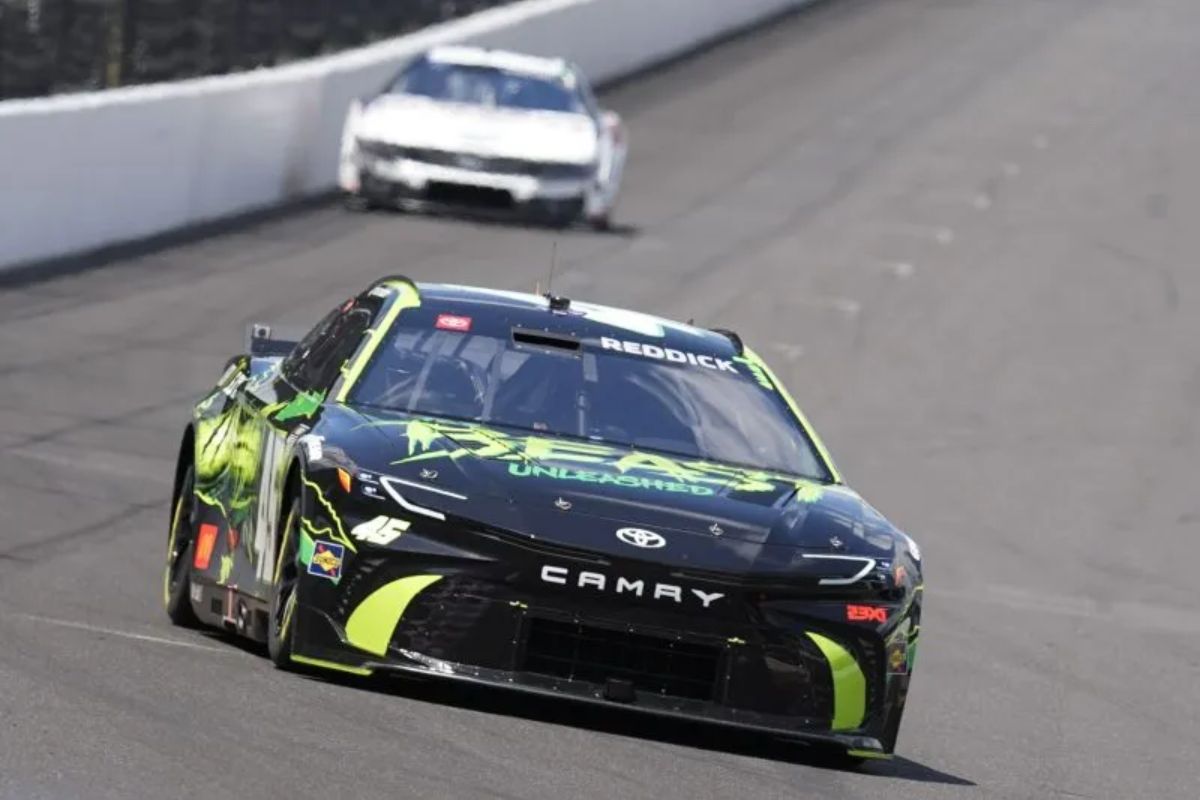NASCAR Shakes Things up at Richmond: NASCAR’s recent decision to alter its tire strategy at Richmond by partnering with Goodyear marks a crucial moment in the sport’s approach to race dynamics. While the introduction of a new tire format promises improved grip and durability, the reduction from eight to six tire sets raises critical questions about team strategy and adaptability. As drivers and teams go through these changes, the potential for unforeseen consequences approaches. How will this shift impact competition, and what does it mean for the future of NASCAR?
Key Highlights
- NASCAR’s new tire formats at Richmond aim to enhance grip and manage wear, but their effectiveness remains uncertain, posing potential risks.
- Reducing tire sets from eight to six complicates team strategies, impacting tire longevity and race outcomes significantly.
- Recent positive feedback from drivers regarding tire performance at Bristol creates optimism but doesn’t guarantee success at Richmond.
- The upcoming changes may lead to unpredictable race dynamics, increasing excitement but also potential backlash if they result in negative outcomes.
New Tire Technology to Transform NASCAR Playoffs at Richmond
As NASCAR gears up for its following race at Richmond Raceway, anticipation builds among drivers who are enthusiastic to test new tire technology that promises to boost performance and strategy in the upcoming playoffs. This development comes on the heels of Goodyear‘s successful tire deployment at Bristol, where improved durability and grip were met with positive driver feedback.
The introduction of these advanced tires at Richmond represents a critical moment for the series, particularly as it coincides with the essential crossroads of the 2024 NASCAR playoffs. Trackhouse Racing driver Daniel Suarez expressed his keen interest in this evolution, stating, “I’m a big fan of this.” Such sentiments highlight a broader excitement among competitors, who recognize that tire performance can greatly influence race outcomes.
NASCAR’s new tire technology not only aims to improve grip but is also designed to manage wear more effectively, potentially allowing for varied strategies in tire management throughout the race. The implications of these advancements are profound. With Richmond being a short track that often demands aggressive driving, the ability to adapt to tire wear could be a game-changer.
Drivers will need to balance aggression with strategy, as the new tire dynamics could affect everything from pit stop timing to race pacing. As teams prepare for this vital race, the integration of creative tire technology may redefine competitive dynamics, setting the stage for a thrilling playoff season. The success or failure of this initiative will certainly be scrutinized, shaping future decisions within NASCAR.
NASCAR’s Experiment and Historical Context
NASCAR’s ongoing experiment with tire technology represents a noteworthy evolution in short-track racing, reflecting the series’ responsiveness to driver feedback and its historical challenges with competitive balance. Over the years, drivers have expressed a desire for innovations that would offer unique competitive advantages, particularly at short tracks like Richmond. The recent tire degradation observed during the Food City Dirt Race highlighted these concerns, prompting NASCAR and Goodyear to reassess their approach.
To contextualize this initiative, it is crucial to reflect on past efforts and their outcomes. As NASCAR gears up for the Federated Auto Parts race in Richmond, the stakes are high. This experiment not only aims to improve the racing experience but also seeks to address the historical inconsistencies that have plagued short-track events.
“In the spring at Richmond, they had eight sets of standard stickers and one set of standard scuffs from qualifying. Next week, will have two fewer sets of standard stickers tires (six sets).” – (Bob Pockrass)
Sorry need to correct this. I read the allocation chart wrong. In the spring at Richmond, they had eight sets of standard stickers and one set of standard scuffs from qualifying. Next week, will have two fewer sets of standard stickers tires (six sets). https://t.co/pgKWcMtJ8F
— Bob Pockrass (@bobpockrass) July 29, 2024
New Tire Formats and Race Strategy
How will the newly implemented tire formats influence race strategy at Richmond, particularly regarding tire management and general performance? The adjustment from eight sets of tires to six brings notable consequences for teams as they go through the complexities of race day.
The introduction of six prime tires and two softer option tires creates strategy, compelling teams to balance speed with durability. Race teams must now prioritize their tire choices more judiciously, as the reduced number of available sets demands astute management throughout the event.
- Tire Longevity: Teams must determine the best timing for tire changes to enhance performance while minimizing degradation. The softer option tires provide speed but may require earlier pit stops, affecting track position.
- Qualifying Position: With fewer sets available, qualifying strategy becomes critical. Securing a front-row start may afford teams a tactical advantage, allowing them to dictate the pace and conserve tires during the race.
- Data-Driven Decisions: The longer lead time in tire production grants teams access to improved data analytics, enabling them to formulate more precise strategies for tire usage. Observing the effects of tire wear during practice sessions will be key to success.
“The extra runway has given us some latitude to be able to hopefully make really good decisions as we go into Richmond. Again, once Richmond is over, we’ll have another data point, and we’ll see what next steps are from there.” – (elton sawyer)
First in the 2024 Cup Series
The introduction of groundbreaking tire formats at Richmond sets the stage for a series of notable inaugural events in the 2024 Cup Series, including the debut of tire experiments in points-paying races and the unprecedented use of a single manufacturer providing three tire options in a regular season event. This marks a crucial shift in NASCAR’s tire strategy, moving from a multi-manufacturer approach to a singular focus where Goodyear will dominate the tire landscape.
This creative strategy aims to improve competition by allowing teams to select from three distinct tire types optimized for varying track conditions, weather, and race strategies. Such flexibility could lead to more dynamic racing, as teams must carefully consider their tire choices and adapt to the evolving race environment. The implications for driver performance and pit strategies are profound, as evidenced by Denny Hamlin’s previous success in tire management during the Bristol race, where he optimized the advantage of tire wear.
The introduction of tire experiments in points-paying races also raises the stakes for teams and drivers, as they will be exploring uncharted territory. This experiment will test not only the durability and performance of the new tire formats but also the adaptability of teams to rapidly changing conditions during a race.
Expert Opinions and Future Expectations
Expert opinions surrounding the upcoming tire option races at Richmond highlight the critical importance of tire performance and management. The success of this groundbreaking approach will largely depend on the adaptability of both drivers and teams to the unique characteristics of each tire compound.
As Denny Hamlin insightfully noted, the effectiveness of these tires is dependent upon their durability and speed across varying laps. This could serve as a crucial moment in NASCAR history, forging new paths in strategy and competition.
“This has been a long time coming.” – (hamlin)
- Improved Competition: The potential for diverse tire strategies might lead to unpredictable race outcomes, increasing fan engagement and excitement.
- Driver Skills Tested: Competence in tire management could redefine driver rankings, showing those who excel at maximizing tire performance over race distance.
- Technical Advancement: This move may spur advancements in tire technology, pushing manufacturers to develop high-performance compounds tailored to specific track conditions.
“A lot of its success or failure is going to depend on what the tire does. Is it fast for just three laps or does it last 10 or 15? You’ve got to have it be faster for 10, 15 laps, and then really be slower 30, 40 laps after that. You’re gonna have to have that rubber mixture just perfect to do that. Every track surface we go to is dramatically different. You would have to create an entire tire chest for each individual track to make it do exactly what we’re hoping it’s going to do.” – (hamlin)
Should this initiative flourish, it could redefine conventional racing norms and elevate the NASCAR spectacle, making the upcoming Richmond race a focal point of scrutiny and anticipation.
News in Brief: NASCAR Shakes Things up at Richmond
The introduction of new tire formats at Richmond represents a notable shift in NASCAR’s approach to race dynamics. While the potential for improved grip and reduced wear is promising, the reduction in tire sets from eight to six introduces tactical complexities that could impact team performance.
The outcome of this experimental move will likely shape future racing strategies, determining whether this bold decision improves competitive balance or poses unforeseen challenges in the 2024 Cup Series and beyond.
ALSO READ: 7 Most Controversial Moments in NASCAR That Shocked the Racing World




